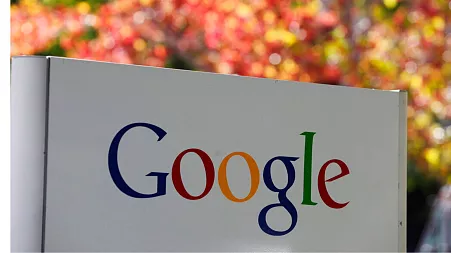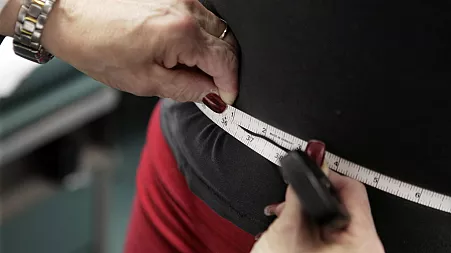NEW YORK (AP) — Connor Tomasko grew up wary of credit cards. As she taught herself more about managing money, she realized that many people also have bad habits when it comes to payment apps.
Tomasko, 31, a freelance software consultant in Chicago, understands why people appreciate the ease of the apps, which typically only require you to know someone’s username in order to send money. But she realized that keeping money in the apps could be risky and means losing out on the interest from a high yield savings account. She now immediately transfers any payments out of the apps and encourages friends to do the same.
“I’m definitely the one that is always harping about high yield savings accounts,” Tomasko said. “But if you’re in an industry dealing with a lot of cash — bartending, say — sometimes you’re just worried about finding a place to deposit it. It’s not always a fun thing to talk about.”
As use of payment apps has grown in recent years, the Consumer Finance Protection Bureau has issued guidance on best practices to avoid pitfalls. For example, funds stored on Venmo or Cash App typically lack the deposit insurance you’d get from a bank, except in certain cases.
“Popular digital payment apps are increasingly used as substitutes for a traditional bank or credit union account, but lack the same protections to ensure that funds are safe,” CFPB Director Rohit Chopra said in a bulletin last year.
In 2022, transaction volume on these apps was an estimated $893 billion, according to the CFPB, and that’s projected to reach $1.6 trillion by 2027. More than three-quarters of US adults say they have ever used one of four popular payment apps, according to a 2022 survey from the Pew Research Center. Of consumers ages 18 to 29, 85% said they’ve used a service such as PayPal, Venmo, Apple Pay, Google Pay, or Zelle, according to a March 2022 study by Consumer Reports.
“The apps are popular because you don’t have to give your personal information, like a phone number, if you just got drinks with someone once but you’re never going to see them again — a date that didn’t go well,” Tomasko said. “I get the benefits in that sense — to be able to send money that way.”
Here’s what you should know:
Funds stored on apps often lack insurance
“It may be tempting to leave money sitting in peer-to-peer lending accounts so that you’re ready to pay your friends when they request money to cover your portion of a dinner bill... (but) there are a few reasons why we wouldn’t suggest doing that,” said Courtney Alev, consumer advocate at Credit Karma.
Funds stored in payment apps often lack deposit insurance, the CFPB has found. FDIC-insured banks protect depositors against the loss of their insured deposits up to at least $250,000 if a bank fails, and a similar framework protects credit unions. While funds stored on payment apps resemble funds stored on deposit accounts, those funds are not typically covered until they have been transferred back to an FDIC-insured bank or insured credit union.
The Financial Technology Association, an industry group that includes many payment apps as members, noted that Cash App and PayPal both offer separate high-yield, FDIC-insured savings products.
Do apps always lack deposit insurance?
In select circumstances, deposit insurance does cover payment apps. With Cash App, funds are eligible for insurance if consumers link their account to a Cash App debit card. And with Venmo, funds added to an account via direct deposit or check cashing are covered.
Still, the CFPB has found that funds stored in a payment app “may be at significantly higher risk of loss for a consumer than if it is deposited in an insured bank or credit union account.”
“Consumers should be aware of these risks if they choose to leave a balance on these nonbank payment apps,” the agency wrote in its report last year. To minimize risks, the CFPB said consumers should “transfer their balances back” to federally insured accounts.
Look for a high yield savings account instead of storing money in apps
Some payment app companies are able to invest users’ funds in loans and bonds, earning money on the investments while generally paying no interest on users’ balances, the CFPB found. To maximize your own funds, immediately transfer any deposits to an account where you can collect interest.
“Leaving money sitting in those accounts is leaving potential interest from a high-yield savings account on the table,” said Alev. “All of that interest adds up over time, so your money could be growing elsewhere.”
Tomasko said she always uses the ‘1-3 business day’ option to transfer funds when using Venmo, to avoid incurring fees, while Cash App has a setting that users can select to automatically route money back to their bank accounts, which she uses.
“There’s definitely room for improvement in the space,” she said. “With Venmo, every time I receive a payment, I go in to actively transfer it out.”
The Financial Technology Association said in a statement that “tens of millions of Americans use payment apps every day to send money to friends and family, cover routine expenses, and manage their finances.”
“Consumers choose these apps because they are safe, convenient, and transparent,” said FTA CEO and President Penny Lee.
___
The Associated Press receives support from Charles Schwab Foundation for educational and explanatory reporting to improve financial literacy. The independent foundation is separate from Charles Schwab and Co. Inc. The AP is solely responsible for its journalism.
Lewis is an Associated Press business reporter based in New York.Disclaimer: The copyright of this article belongs to the original author. Reposting this article is solely for the purpose of information dissemination and does not constitute any investment advice. If there is any infringement, please contact us immediately. We will make corrections or deletions as necessary. Thank you.



